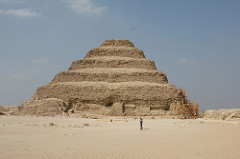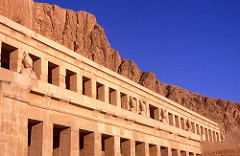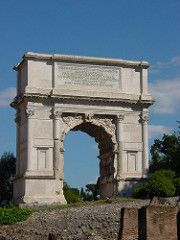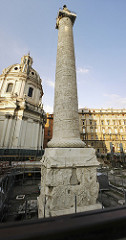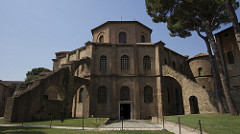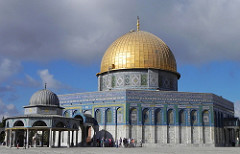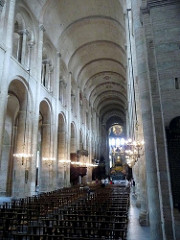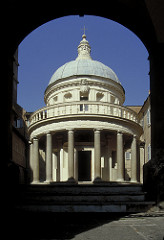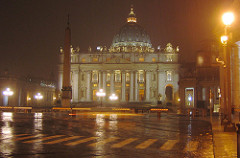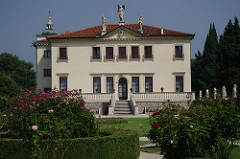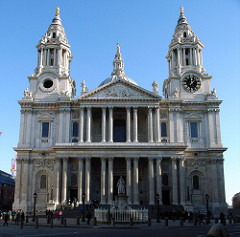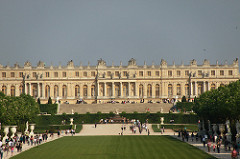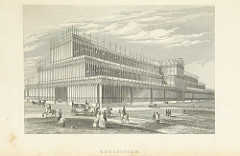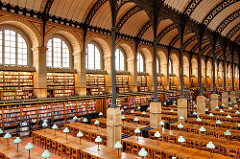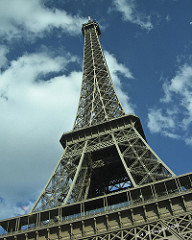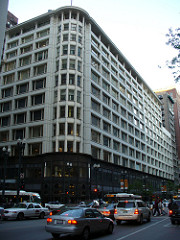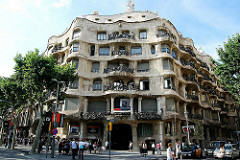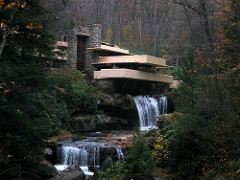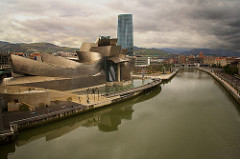Stepped Pyramid of King Djoser
Designed by Imhotep, first recorded artist in history. Build during Old Kingdom of Egypt. A tomb. Protects Djoser's mummy and symbolizes his power. Interior columns are first columns in history.
Tomb of Hatchepsut
New Kingdom of Egypt, tomb of Queen Hatchepsut. Mummy believed to be hidden somewhere other than the tomb to be preserved from her enemies.
Parthenon
Commissioned by Pericles, Greek. Part of massive building project on the Acropolis. Doric temple design by Iktinos and Kallikrates. Sculpture by Phidias. Used to house huge statue of Athena, dedicated to Athena. Doric metopes and Ionic frieze of Panatheic Procession.
Arch of Titus
Imperial Rome, relief sculptures of Roman military victories. Shows Romans carrying seven-branched menorah from the Temple in Jerusalem. Figures representing victory (Nike). Used as model for L'Arc de Triomphe in Paris.
Column of Trajan
Used to be topped by Trajan, now St. Peter. Depicts story of the Dacian War. Before and after battle, little combat. Continuous narrative that starts on bottom and spirals to top. Ashes of Trajan in the base.
Pantheon
Roman temple dedicated to all Gods. Dome's weight lessened through coffers and sunken decorative panels. Oculus lets light in. Influenced Palladio.
San Vitale
Byzantine, under Emperor Justinian. Central plan. Contains Byzantine mosaics of Emperor Justinian and his wife, Theodora. Influenced design of Palatine Chapel of Charlemagne.
Hagia Sophia
Byzantine. Greek cross plan, with dome.
Dome of the Rock
Islamic, in Jerusalem. Exterior and interior highly decorated. Animals and people never portrayed. Site of Adam's remains, Abraham prepared to sacrifice his son, where Mohammed ascended into heaven.
Saint Sernin Church
France, Romanesque style. Rounded arches, and second floor gallery. Crucifix form with radiating chapels from apse and transept. Side aisles for relic worshipers. Ribbed barrel vaults. Circular window eventually becomes rose window. Interior arcades.
The Tempietto
Italian Baroque, by Bramante.
Saint Peter's Basilica
Italian baroque. Designed by Bramante, Michelangelo, and Maderno. Pope Julius II ordered Old St. Peter's be rebuilt. Where St. Peter was said to have been martyred. Doric columns, and huge colonnade. On Capital Hill, Rome.
Villa Rotunda
Italian Baroque, by Palladio. A country villa with heavy influence from Roman architecture (the statues of the roof, balustrade). Influenced Neoclassical architects, inspired Palladian revival.
St. Paul's Cathedral
Christopher Wren, English Baroque. Rebuilt after fire in London. Greco-Roman influence in statues, columns, and pediment.
Versailles Palace
French Baroque, designed by Le Brun. Lines of garden point towards the King's bedroom. Gardens contain follies and fake ruins. Hall of Mirrors displays wealth (mirrors difficult to make during time period).
The Crystal Palace
By Joseph Paxton, Historicism. Built for the Great Exhibition of 1851. Pre-fabricated from glass and wrought iron. Taken down after exhibition, eventually destroyed in a fire.
Bibliotheque Sainte-Genevieve
Henri Labrouste, Historicism. In Renaissance-revival style. Uses cast iron in ceiling and as columns.
The Eiffel Tower
Gustave Eiffel, Historicism. 82 stories high, at the time, the tallest building in the world. Entrance over the Paris Exhibition of 1889. Meant to last only 20 years but turned into a radio antennae after exhibition.
Carson, Pirie, Scott Building
By Sullivan, modern. Large windows and clear geometry, hallmark of Chicago style of architecture. Highly detailed ornamentation considered as part of "function" Sullivan's motto of "form follows function" because details would attract people to the store. Art Nouveau style detail. Rounded corner and entrance.
Casa Mila
Gaudi, in Barcelona Spain. Art Nouveau style. Few straight lines, wrought iron railings, Moorish architecture styles, and cave-like entrance.
Falling Water
Frank Lloyd Wright, Prairie Style. Follows Wright's style of making a building part of it's environment. Uses cantilevers, rooms grouped around central fireplace. Water runs underneath the house. Furniture designed specifically for the house.
Guggenheim, Bilbao
Frank Gehry, Post-Modernism. Meant to resemble a boat. In Bilbao, Spain.
